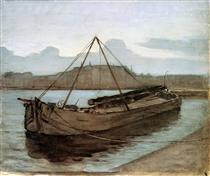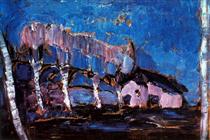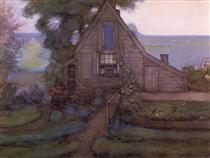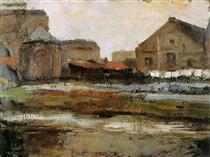
1872 - 1944
Piet Mondrian

description
Mondrian was one of the pioneers of 20th-century abstract art. He changed his artistic direction from figurative painting to an increasingly abstract style, which was eventually reduced to simple geometric elements.
Piet began painting as a child and did not stop doing so until his death. His first teachers were his father Peter Cornelius and uncle Fritz Mondrian. He also received the education to be an elementary school teacher. In 1892, the young artist began his studies at the Academy of Fine Arts in Amsterdam. For many years, Mondrian painted in the techniques of his contemporaries.
Together with Theo van Doesburg, Mondrian co-founded the art group “De Stijl”. The artist also created a “non-representational form”, which he named Neoplasticism.
The most famous paintings in Mondrian’s catalogue were done using three primary colours (red, blue and yellow) and three “non-colours” (black, white and grey). All these works are strictly geometric; they contain only vertical and horizontal lines.
Key ideas:
– Mondrian’s works were highly utopian. The artist was concerned with a search for universal values and aesthetics.
– The artist maintained that art should be above reality, “otherwise it would have no value for a man”.
– In 1914, the artist wrote: “Art is higher than reality and has no direct relation to reality. To approach the spiritual in art, one will make as little use as possible of reality, because reality is opposed to the spiritual. We find ourselves in the presence of abstract art.”
– Mondrian claimed that a “denaturalization” of art, a rejection of natural forms and a transition to pure abstraction are needed.
1872
1911
1913
1917
1942
1944
The birth of the artist
Mondrian participated in the International Exhibition of Contemporary Artists in Amsterdam

Red, blue and yellow

“De Stijl”

The first personal exhibition

The death of the artist

Piet Mondrian
On Artist
flow
Impressionism
Post-Impressionim
Cubism
friends
Wassily Kandinsky
Theo van Doesburg
Mark Shagal
Fernand Leger
Ian torop
Theo van Doesburg
Roman Selsky
Margit Selska
artists
Vincent van Gogh
Paul Cezanne
Pablo Picasso
Jacob van Ruisdael
By Artist
flow
Neoplasticism
Expressionism
Minimalism
friends
Wassily Kandinsky
Theo van Doesburg
Mark Shagal
Fernand Leger
Ian torop
Theo van Doesburg
Roman Selsky
Margit Selska
artists
Josef Albers
Ad Reinhardt
Lee Krasner
Ilya Bolotowsky
Balcomb Greene
Yuri Zlotnikov
